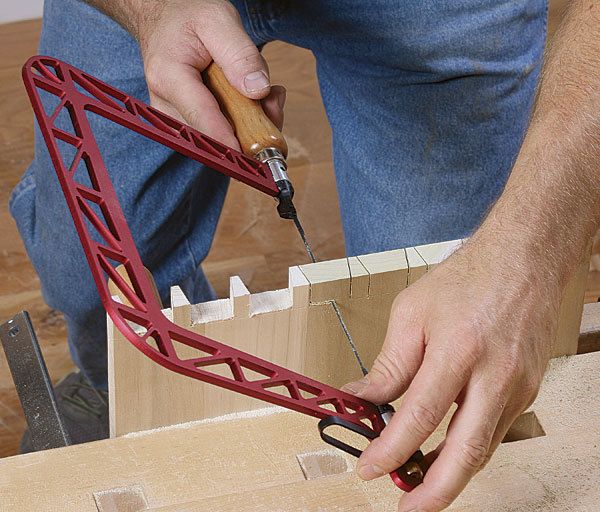Tool Test: Coping Saws
Cut curves and speed up your dovetails with this simple saw
Synopsis: Coping saws are great for quickly getting rid of the waste between dovetails, sawing curves on any project, or coping moldings. In this tool test, Chris Gochnour looked at 13 coping saws for the features woodworkers value most: easy blade installation, fast, precise blade rotation, how easy it is to tension the blade, the saw’s weight and ergonomics. After using the saws to do a number of traditional woodworking jobs, he found a few that stood out from the rest of the pack.
Models tested include: Bahco 301; Century Drill and Tool 4940; Eclipse 70-CP1R; Garrett Wade multi-function coping saw; Gramercy Tools 12-in bowsaw; Irwin 2014400; Knew Concepts coping saw, Lee Valley coping saw; Olson coping saw; Robert Larson 540-2000; Stanley Fat Max 15-104; Stanley Fat Max 15-106; Tekton 6865.
Coping saws can be used to remove waste in joinery, make cope cuts on molding, and saw tight curves of all kinds. Motorized bandsaws and scrollsaws perform similar tasks, but require the workpiece to be brought to the tool, a task that can be difficult, awkward, or even impossible. More often than not it’s more convenient to take the tool to the workpiece. This makes the coping saw an indispensable tool in the woodshop, serving an essential and useful function that cannot be matched by machine tools.
This review considers the 13 coping saws we found on the market. These are simple tools, consisting of a handle, a blade, and a frame. But despite the simple nature of these saws, there is a significant variation in the design and features offered. Regardless of their differences, I evaluated the features woodworkers value most: the throat’s depth; how easy it is to install, tension, and rotate the blade; and the saw’s weight and overall ergonomics. I also used the saws to remove waste between dovetails, cope a crown molding, and cut a curvy bracket foot. I’ll tell you which saw earned Best Overall honors, and which one is the Best Value.
For furniture making, a coping saw is the right choice
If you take a look at a woodworking supply catalog, you’ll notice that coping saws aren’t the only small frame saws available. Fretsaws look and function much like coping saws, but coping saws are definitely the right choice for furniture making.
The key difference between a coping saw and a fretsaw is how the blade is mounted in the frame. The blade of a coping saw has a pin on each end that fits into a corresponding socket in the frame. The sockets can be rotated after the blade has been installed. That simple adjustment lets you easily set up the saw so that the frame does not interfere with the cut. A fretsaw blade has no pins, but is clamped to the frame and does not rotate. To change the blade’s orientation, you must twist it with a pair of pliers. Fretsaws also have smaller throats, making them better suited to marquetry and fretwork.
For the full article, download the PDF below:
Fine Woodworking Recommended Products

Veritas Wheel Marking Gauge

Bahco 6-Inch Card Scraper

Lie-Nielsen No. 102 Low Angle Block Plane























Log in or create an account to post a comment.
Sign up Log in